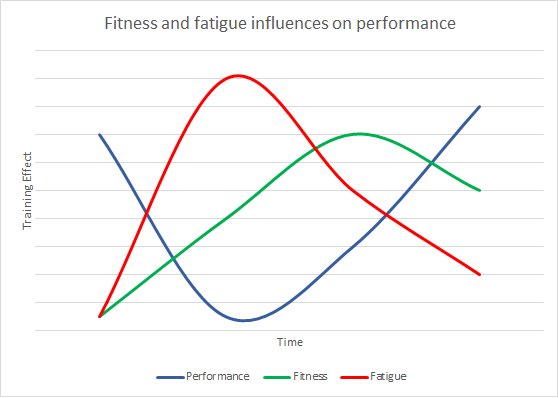by Charlie Kay
Imagine you’ve just pushed it in your training for 8 straight weeks. In that 8 weeks, you’ve had your typical life stresses (work, life admin, family, friends etc) on top of your training stresses. Now imagine these stresses as a tank of fuel. Every stress takes a little bit of fuel out of the tank. Over the course of those 8 weeks, how much fuel do you think will be left in the tank?
In this analogy, the emptying tank relates to an accumulation of fatigue, which represents the ultimate catch-22 in training: increasing physical fitness also increases fatigue, which in turn can decrease performance levels. To bear the fruits of your labour in increasing performance, periods of restoration must be induced to enable adaptations to take place. You must let the tank refill!
In this article, we will cover three simple things you can do to help take care of your fuel tank so you can hit high performance levels at the right time.
How adaptations occur
It’s important to note how adaptations occur in the first place. Hans Selye’s general adaptation syndrome (GAS) identifies three key stages that describe the acute response to a training stress.
Stage 1: Alarm Stage
First, as we complete a training session we trigger the ‘alarm’ stage. We have an increase in fatigue, a decrease in energy stores and elevated stress hormones like cortisol. The greater the magnitude of the stimulus, the greater the alarm response is.
Stage 2: Resistance Stage
Second, our body fights back against the stressor and adapts to the stimulus. We have a restoration of energy stores and stress hormones, and this process will take longer based on the intensity of the alarm stage. When sufficient recovery is permitted, we can find ourselves at a new baseline of performance – termed ‘supercompensation’. We adapt and thrive.
Stage 3: Exhaustion Stage
If we constantly trigger alarm responses without leaving enough time between stresses, we can find the increases in fatigue can continue to get more and more severe. Eventually, this can lead to overtraining.
Three tips you can use to optimise the GAS
Recognise that deload weeks are not a bad thing
It’s clear that in order to elicit an adaptation we have to subject the body to a level of stress sufficient enough to trigger the alarm stage. However, if we continue to encounter training stress after training stress without a sufficient recovery period, we will not supercompensate, but rather we will overtrain. A short period of overreaching (for the purpose of this article, defined as a sustained period of alarm phases) can be a good thing to force adaptation in the resistance stage. For that to happen, we must induce a period of recovery via a ‘deload’. A periodic reduction of training intensity, volume, frequency and density enables the resistance stage of GAS to take hold.
One common way of utilising a deload is via a step loading approach, whereby training load increases for three consecutive weeks before a deload in week four. For example, in a four week cycle you may perform:
- Week 1: 3 x 5 at 80%
- Week 2: 3 x 5 at 82%
- Week 3: 3 x 5 at 85%
- Week 4: 2-3 x 5 at 50%
Keep track of how you are feeling by monitoring fatigue
When chasing adaptation, we must trigger supercompensation, which will always carry an inherent risk of injury – because you’re subjecting yourself to overload. While training load and athlete monitoring is a huge topic which will not be covered in this article, here are two simple things we can do to more at least partially measure our ‘readiness to train’ with minimal/no equipment.
- Questionnaires: You can keep track of how you’re feeling by going through some simple questions (like sleep quality, how fatigued you feel, how stressed you feel and how ready to train you feel) with a 1-5 scale. If you notice your scores are consistently lower, it may be time for a deload.
- Do the ‘tap test’: There will definitely be a free app available on your phone, but you could perform this test by getting a pen and making as many dots on a page as possible in ten seconds. If you do this every morning, you’ll quickly establish a baseline of how your central nervous system is feeling. If you usually hit ~50 in ten seconds, and one day you hit ~20 – today you probably won’t be breaking any records and might want to adjust your training.
Take care of the low hanging fruit
Ever heard the term ‘keep it simple, stupid’? Usually there are no great secrets, and this topic is no different. If you take care of the basics good things tend to happen. For the purpose of this article, that might look like the following:
- Sleep 8+ hours
- Drink more water, less of everything else
- Eat more protein
- Eat more vegetables
- Organise your training into a high-low split.
Training is always a subtle balance between fitness and fatigue, one which constantly affects your levels of preparedness. If we can control the controllables, we will optimise our chances of being ready at the right time.
Happy training!
Charlie
Are you an athlete, coach or student looking to develop yourself for your clients or your own training?

